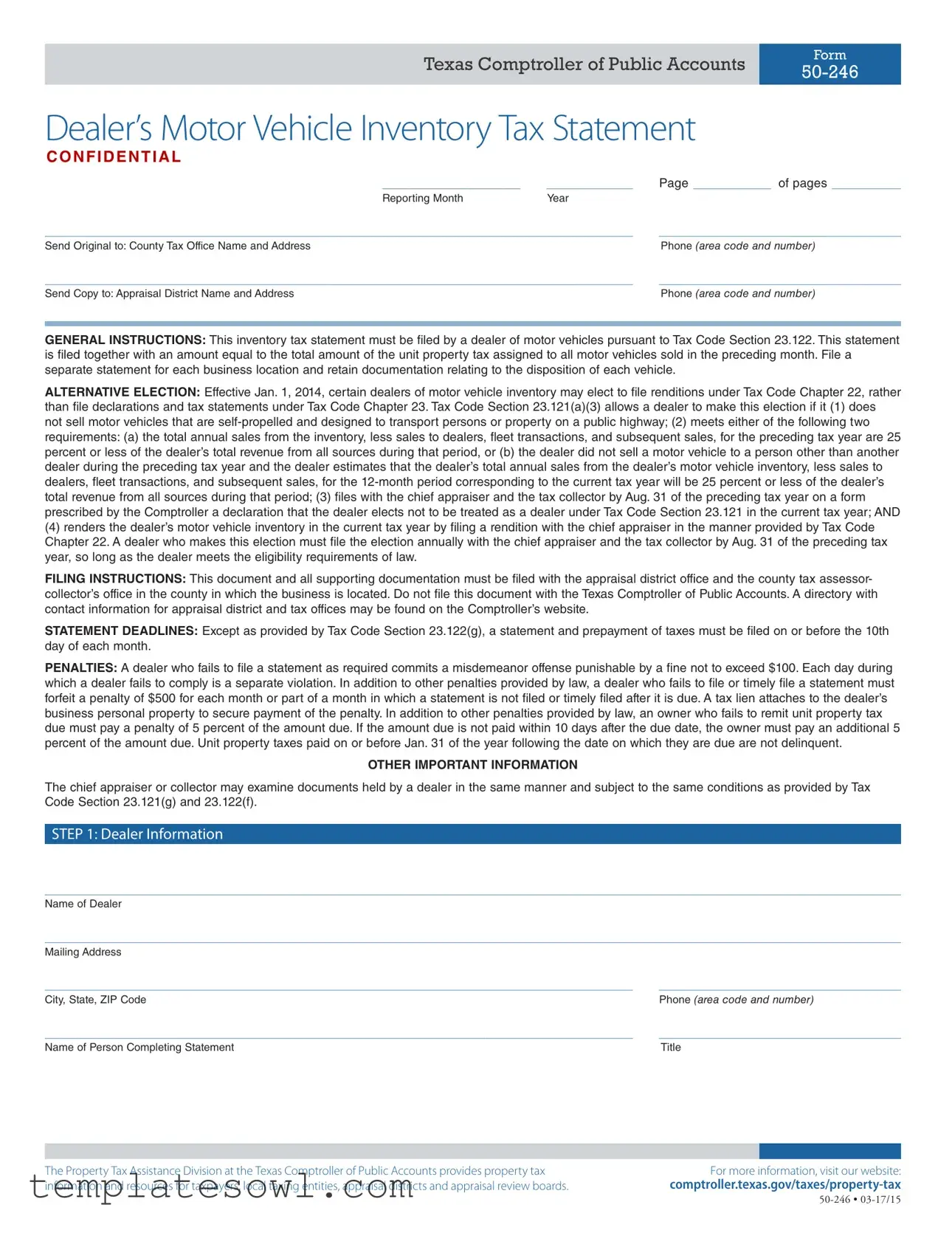1. What is the purpose of the 50-246 form?
The 50-246 form, also known as the Dealer’s Motor Vehicle Inventory Tax Statement, is a document required by the Texas Comptroller of Public Accounts. It is used by motor vehicle dealers to report the inventory of vehicles sold in the preceding month and to remit any related property taxes. This ensures compliance with Texas tax regulations related to motor vehicle sales.
2. Who is required to file the 50-246 form?
Any dealer of motor vehicles in Texas must file this form. This includes those who sell, lease, or otherwise transfer ownership of motor vehicles. Dealers are required to file separate forms for each business location they operate.
3. What are the filing instructions for the 50-246 form?
Dealers must submit the completed form and all supporting documents to both the appraisal district office and the county tax assessor-collector’s office in the county where their business is located. It is important to note that the form should not be sent to the Texas Comptroller of Public Accounts.
4. What is the deadline for filing the 50-246 form?
The form, along with any prepayment of taxes, must be filed no later than the 10th day of each month. It's essential for dealers to adhere to this timeline to avoid penalties.
5. What are the penalties for failing to file the 50-246 form?
If a dealer fails to file the 50-246 form, they may face a misdemeanor offense with a fine of up to $100. Additionally, a $500 penalty is incurred for each month the filing is late. Tax liens may also be imposed on business property to secure payment of these penalties.
6. What is the process for dealers opting for an alternative election?
Starting in 2014, certain dealers have the option to file renditions instead of the 50-246 form if they meet specific criteria. These criteria include limitations on the types of vehicles sold and the percentage of total revenue derived from those sales. Eligible dealers must file a declaration of this election with the appraisal district and the tax collector by August 31 of the preceding tax year.
7. What information is required about vehicle sales on the 50-246 form?
Dealers must provide detailed information about each vehicle sold during the reporting month. This includes the sale date, model year, make, vehicle identification number, purchaser's name, type of sale, sales price, and unit property tax. Accurate reporting is crucial for calculating tax obligations.
8. How is unit property tax calculated?
Unit property tax is calculated by multiplying the sales price of the vehicle by the unit property tax factor. This factor can be obtained from the county tax assessor-collector or appraisal district and is derived from the previous year’s aggregate tax rate divided by 12. The total unit property tax from sold vehicles should be submitted with the statement.
9. Where can I find additional resources on the 50-246 form?
Dealers looking for more information can visit the Texas Comptroller of Public Accounts website. They provide resources about property tax, including guidance on filling out the 50-246 form and compliance requirements for motor vehicle dealers.



